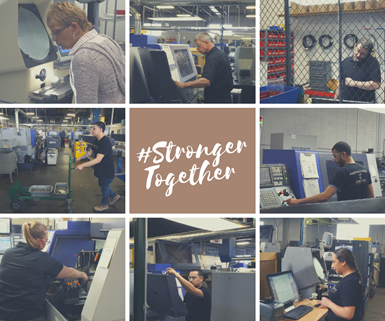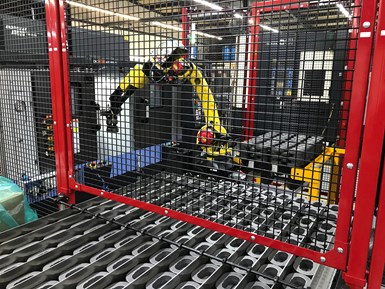Effective Leadership Emerges During Trying Times
Effective machine shop leaders are those who give their team members the tools they need to carry out their duties as efficiently as possible when times are good and when times are bad.

Effective leaders build their businesses on the pillars of culture, communication and technology. (Photo courtesy of Pioneer Service)
When I started writing about manufacturing 23 years ago, I was largely focused on learning the technology. The public relations agency I was with covered a range of processes — machining included — that I needed to research to then be able to competently write about them. I did benefit by having a mechanical engineering degree, which helped me ramp up perhaps quicker on those concepts than I otherwise would have been able.
This continued through my many years with our sister publication Modern Machine Shop. But, while I cannot claim to be an expert on any one manufacturing topic, I certainly have absorbed a good bit of knowledge in a number of technical areas. Some of this is a result of discussions with CNC machine shop owners and managers at their facilities, industry events and trade association meetings.
Looking back, I was also — perhaps subconsciously — learning lessons in leadership as I spoke with those people. Although quite often my primary goal in those chats was to learn about how their operations were applying new equipment or processes, those talks also commonly touched on effective leadership and appreciation of the human element within a successful machining business. I also noticed quite often some aspects of their leadership skills while they were interacting with employees during shop tours that perhaps they weren’t even aware they were displaying.
In my professional writing career, the importance of effective manufacturing leadership had never been more front and center than when businesses came together in the fight against the COVID-19 pandemic. That was reinforced as I gathered background information from various shop principals for “Our Industry Responds,” the snapshot-in-time cover story starting on page 30. Their success in effectively supporting the needs of their customers and employees alike amid situations such as shutdowns and stay-at-home orders came down to three areas: culture, communication and technology. Those three pillars were already in place at the shops profiled in the story as well as many others, which is why they were able to adroitly adapt as needed during the changing business and social conditions resulting from the pandemic.
Success in effectively supporting the needs of customers and employees alike comes down to a shop culture, communication and technology.
An effective culture is one steeped in continuous improvement. Proper communication means all information employees need to do their jobs is provided to them. And advanced technology enables employers to best serve their employees by enabling them to work more efficiently while offering the possibility to enhance their skill sets.

Machine-tending robots can enable operators to perform higher-value duties rather than simply loading and unloading parts.
Automation is an example of that last point. Having a robot tend a machine tool frees an operator to perform other higher-value tasks, instead of loading and unloading parts all shift. This might require training, but training is inherent to any culture of continuous improvement.
But, besides robots, there are many other forms of automation available to shops. Job setups can be made simpler using devices such as machine spindle probes, rather than tasking an operator to manually position workpieces. Tool presetters can automatically measure tools, eliminating touch-offs. New inspection equipment such as shopfloor CMMs and vision systems can speed and simplify part measurement. Enterprise resource planning and data monitoring capabilities can make it as easy as clicking a mouse to see the status of specific machines or jobs.
Giving employees tools like these not only enables them to be more efficient but it also helps build loyalty.
Heading a machine shop and heading a magazine are two different things. However, I hope to apply some of the leadership lessons I’ve learned from successful shop owners and managers in my new role as editor-in-chief. I also hope that articles like our June cover story, as well as this workforce development piece, either spur new leadership ideas or help reinforce leadership skills you already apply. And keep an eye out for next month’s issue in which we will highlight 10 bright, young manufacturing professionals we have identified as Emerging Leaders, those who will carry our industry into the future.
Read Next
Emerging Leader JR Lang Inspires Other Young Leaders to Succeed
“Living the American dream has been a road with plenty of ups and downs, but I’ve been blessed in the ability to provide employment and forge partnerships with many eager and hardworking individuals along the way.”
Read MoreMeet Production Machining's 2019 Emerging Leaders
Production Machining has discovered a lot of young talent in the industry, and we want to share the stories of 20 of these young leaders with you.
Read MoreEmerging Leader Diana Peters Advocates for Women in Manufacturing
Since Symbol's emergence in 2005, Diana's persistence has helped place thousands of Symbol's graduates, including women, into high paying, high demand jobs and has expanded the course curriculum to better serve the manufacturing industry.
Read More














.jpg;maxWidth=300;quality=90)





